Michigan is a pretty safe state as far as wildlife is concerned. You won’t find any particularly dangerous animals flying in Michigan’s skies. However, that doesn’t mean that you don’t have anything to worry about.
When in Michigan, you should still keep your eyes on the skies for certain animals. Typically, these are insects, like mosquitoes and yellowjackets. These can be potentially dangerous, as they carry diseases.
However, some birds can do damage if disturbed and threatened, such as bald eagles.
We’ll discuss all of these animals below so that you know exactly what to look out for.
Are Michigan’s Skies Dangerous?
Michigan’s skies are not particularly dangerous. There aren’t any especially dangerous animals in the skies that you need to watch out for. However, some insects and birds can pose a risk in specific instances. Luckily, most of these risks can be avoided by staying away from bird nests and wearing insect repellant.
Safety precautions go a long way to prevent problems with flying animals in Michigan. While these animals can be a source of annoyance and discomfort, they are not typically life-threatening.
7 Dangerous Animals Flying in Michigan’s Skies
1. Bald Eagle
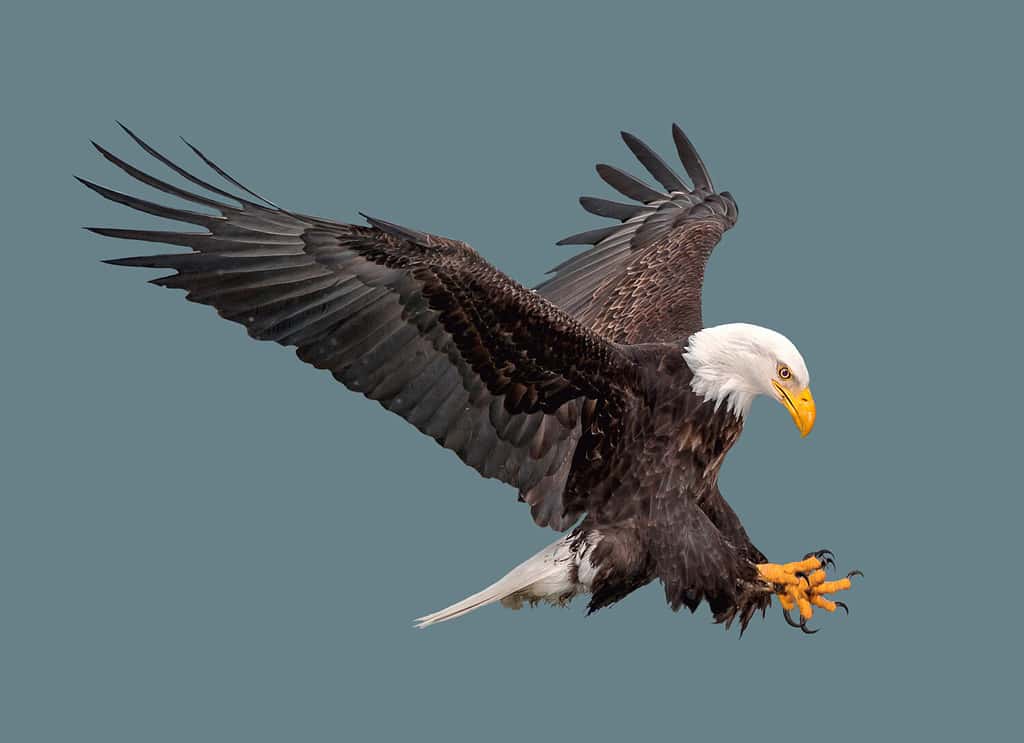
This species is a very ferocious bird of prey, so they can look rather frightening. However, they are typically harmless to people.
©PHOTOOBJECT/Shutterstock.com
The bald eagle is a very beautiful, magnificent bird (that’s also protected by federal law). Many tourists come from the southern part of the country to see bald eagles, so they can often function as a tourist attraction in some cases. Their impressive size and white head make them easy to identify, even from a distance.
Bald eagles are one of the largest raptors in North America, with wingspans of up to 7 feet.
Luckily, they aren’t typically dangerous to people. They are apex predators and have exceptionally strong hunting skills. Their talons are usually being exercised on fish and the occasional small mammal, though they can defend themselves if threatened.
2. Osprey
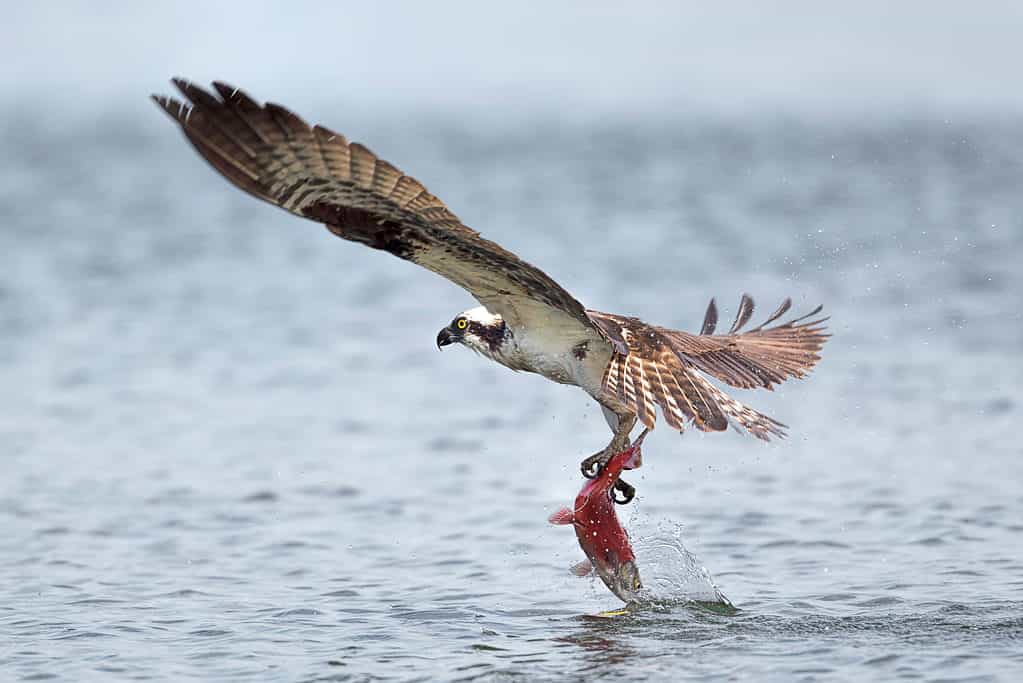
Like other birds of prey, osprey eat fish and often carry them in their talons to a place where they can safely consume their meal.
©Gregory Johnston/Shutterstock.com
Ospreys are striking raptors with brown and white plumage and sharp talons. Because they primarily hunt for fish, they’re most common around bodies of water. They’re most known for their impressive hunting dives, where they plunge into the water to catch fish.
While they aren’t inherently dangerous to humans, they can be territorial and protective, especially during breeding season. They may guard their nests and even attack if they feel you’re threatening their young.
Therefore, it’s best to keep a safe distance from their nests at all times.
3. Yellow Jackets and Hornets
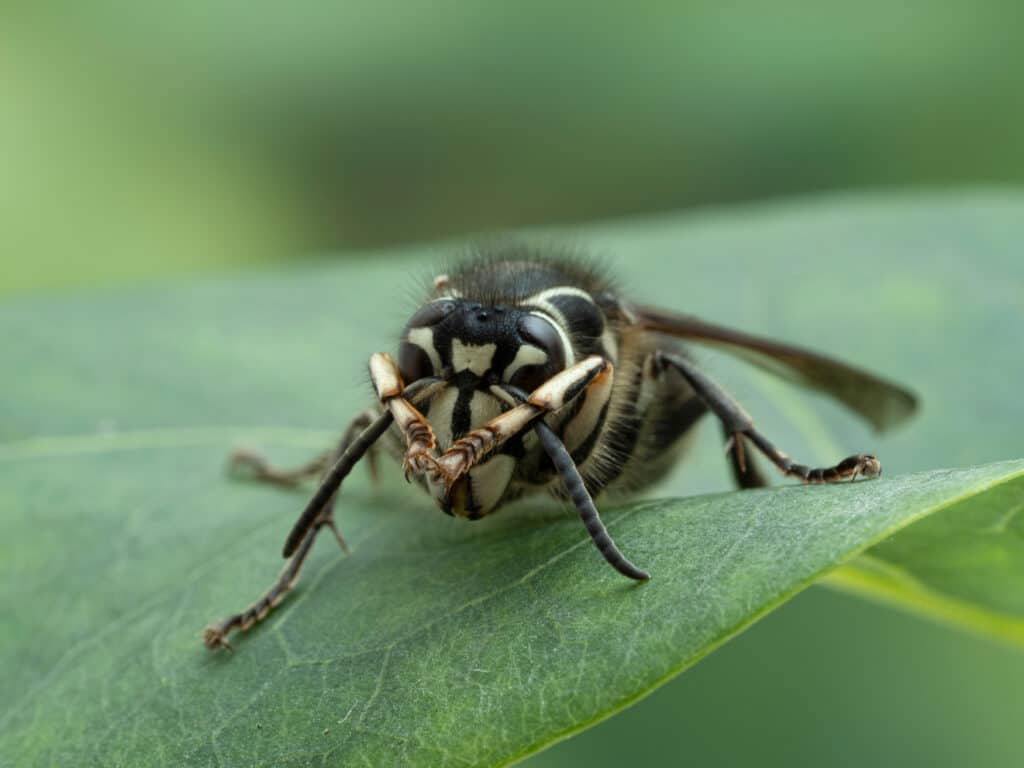
Hornets are social wasps that build communal nests by chewing wood to create a sticky thin pulp.
©Ernie Cooper/Shutterstock.com
Michigan is home to several species of stinging wasps, including hornets and yellow jackets. These insects are social (usually) and build a nest that can contain several individuals. When disturbed or threatened, they can become aggressive and sting several times, making them one of the more dangerous insects you could come across.
As their name suggests, yellow jackets have yellow and black markings, making them pretty easy to spot. However, hornets have a browner colroation and are much simpler.
Stings from these insects can lead to localized pain, swelling, and, in some cases, allergic reactions. It’s important to exercise caution, especially if you are allergic.
4. Mosquitoes
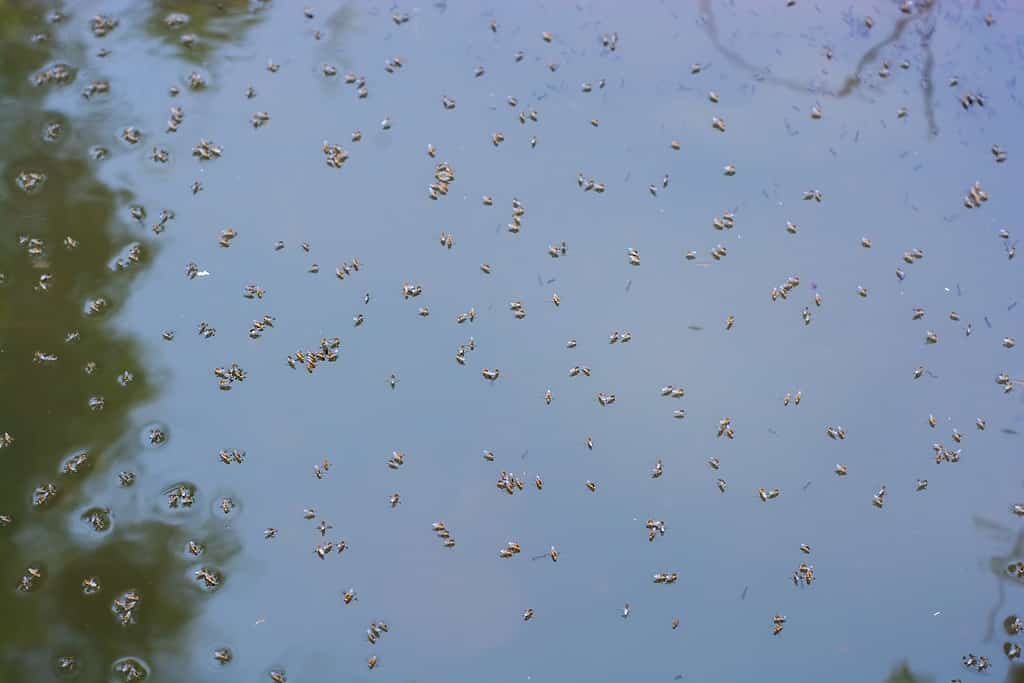
These bugs breed in water, so you can help keep their population lower by removing sources of still, standing water.
©Hussain Warraich/Shutterstock.com
Mosquitoes are an exceptionally common insect in Michigan. You’ll likely get bit at least once. Luckily, mosquito bites can be annoying, but they’re usually not dangerous. However, in some instances, mosquitoes can carry diseases like West Nile virus, which can absolutely be dangerous.
Only female mosquitoes consume blood, which they need to nourish their eggs.
You can do a lot to prevent mosquito bites, including wearing insect repellent and wearing appropriate clothing.
5. Deer Flies
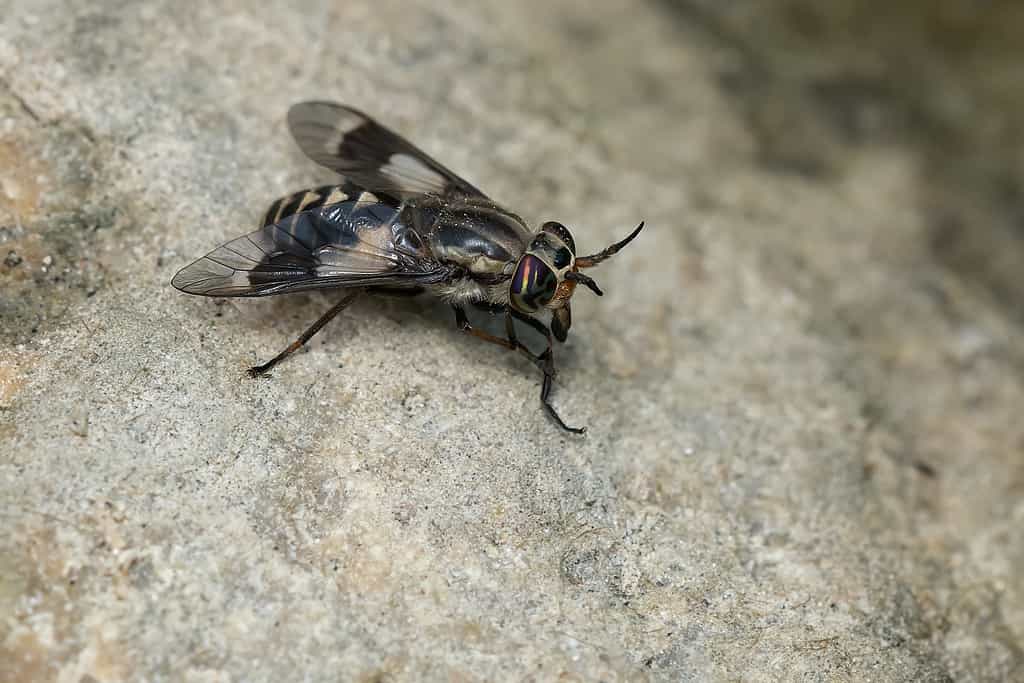
Equipped with razor-sharp mouthparts, deer flies inflict a painful bite on unsuspecting victims.
©Paul Reeves Photography/Shutterstock.com
Deer flies are medium-sized flying insects that are known for their painful bites (though they are usually not dangerous). They’re rather large and darkly colored, with colorful eyes. Therefore, they’re often easy to see (and hear). As the name suggests, they usually target deer. However, they can also target humans.
Often, their bites can be quite painful and may even result in skin irritation, itching, and swelling. Some people will have more dramatic reactions than others.
They’re often found near bodies of water, so watch for them when you visit local lakes or ponds.
6. Horse Flies
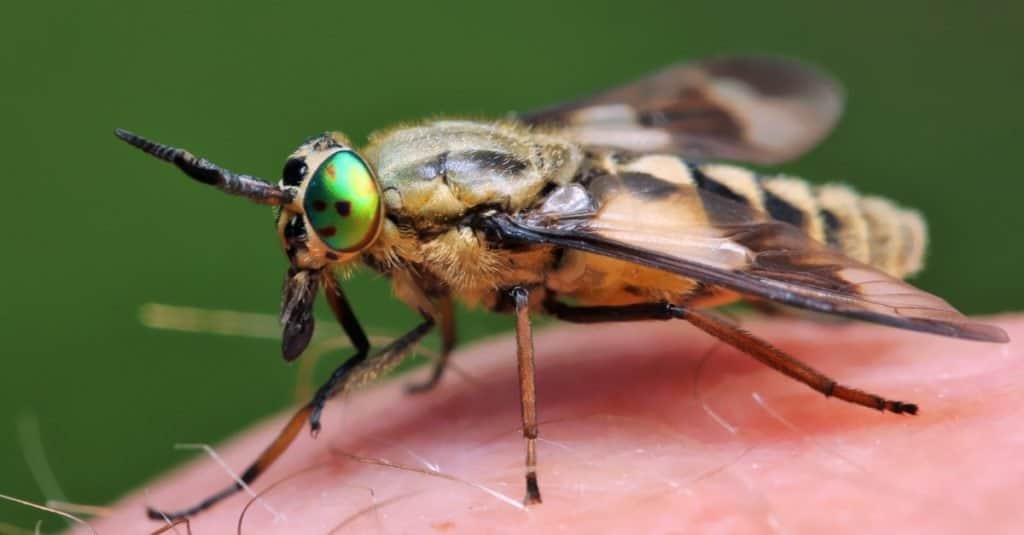
The
Horsefly
is a predator, actively attacking humans and animals.
©Achkin/Shutterstock.com
Horse flies are very similar to deer flies. They can deliver painful bites, though they usually do not target people. They have large eyes and are commonly seen in rural areas, especially places with lots of trees.
Primarily, these bigs are a nuisance to livestock. However, their bites can cause localized pain and even severe skin reactions in some individuals. Some people hardly show any sign of being bitten, while others may have moderate swelling.
You are mostly likely to see horse flies in the warmer months when they are active. Like most insects, they aren’t common when it is colder outside.
7. Biting Midges
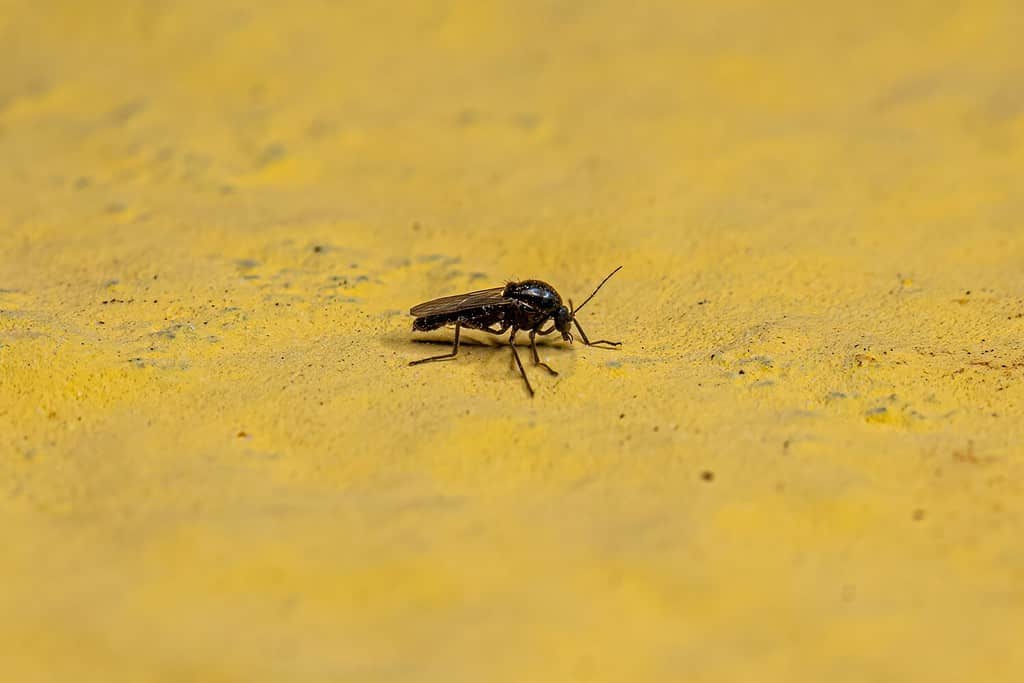
These bugs are exceptionally small, so you will probably never notice them. Instead, you’ll notice the itchy, red spots on your legs.
©Vinicius R. Souza/Shutterstock.com
Biting midges are exceptionally tiny and hard to see. However, they’re known for delivering particularly painful bites that can become very itchy shortly afterward. They’re often called “no-see-ums,” as their small size makes them challenging to see.
These small bugs are most active during dusk and dawn. You may also notice more of them during the slightly cooler seasons of early fall and late spring. They tend to be most common in damp areas.
Wearing protective clothing is highly recommended if you expect these bugs to be around. They’re often present in large numbers, so they can quickly deliver a dozen bites or more before you notice.
Summary of 7 Dangerous Animals Flying In Michigan’s Skies
| Number | Animal |
|---|---|
| 1 | Bald Eagle |
| 2 | Osprey |
| 3 | Yellow Jackets and Hornets |
| 4 | Mosquitoes |
| 5 | Deer Flies |
| 6 | Horse Flies |
| 7 | Biting Midges |
The photo featured at the top of this post is © Footsore Fotography/Shutterstock.com
Thank you for reading! Have some feedback for us? Contact the AZ Animals editorial team.






